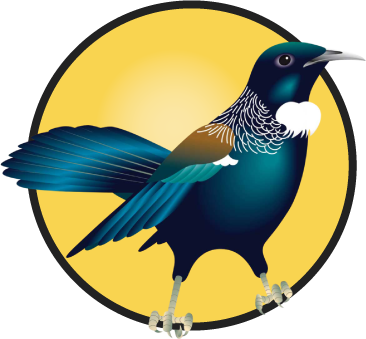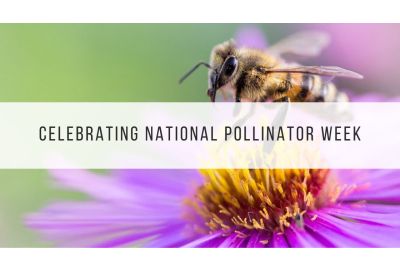National Pollinator Week is an annual event during the last full week of June, which aims to raise awareness of the essential role of pollinators within the environment and address the challenges they face, such as habitat loss, climate change, pesticide use, and diseases. Originating in the United States in 2007 and now being celebrated worldwide, it promotes the conservation of pollinators, educates the public about their vital role in sustaining ecosystems, and encourages everyone to take action in protecting them.
Why are Pollinators Important?
Pollinators are responsible for fertilising flowers and enabling the reproduction of countless plant species. They perform an irreplaceable ecological service and serve as vital links in the ecosystem, facilitating the reproduction of plants by transferring pollen from the male part (anther) to the female part (stigma) of flowers. This process leads to the production of fruits, seeds, and the generation of new plant life. It is estimated that three-quarters of food crops – including fruits, vegetables and nuts – depend on pollinators to some extent.
In addition to their role in food production, pollinators also support the growth of wildflowers and contribute to the diversity and resilience of natural ecosystems, maintaining genetic diversity and ensuring a vibrant and sustainable ecosystem.
Types of Pollinators
The UK is home to a wide variety of pollinators, each playing a crucial role in maintaining biodiversity and supporting food production. The diversity of pollinators is key to maintaining a healthy ecosystem. Common pollinators found in the UK include: bees (including honeybees, bumblebees and solitary bees), butterflies, moths, hoverflies, wasps and beetles.
Elsewhere, pollinators include bats (which are especially important for night-blooming plants), and certain species of birds, like hummingbirds, which play a significant role in tropical regions. Other vertebrates, such as monkeys, lemurs, rodents and lizards have been recorded pollinating some plants.
Pollinator-Friendly Plants
By cultivating a pollinator-friendly garden or greenspace, you can provide a welcoming habitat and ample food sources for these vital creatures. Examples of pollinator-friendly plants are wide ranging, and include:
- Floral plants, such as poppies, marigolds, lavender, honeysuckle, borage and buddleia.
- Culinary herbs, including rosemary, oregano, sage, mint and chives.
- Plus, plants many of us would consider weeds, such as nettle, dandelion and ivy.
How to Support Pollinators
Whether you have a garden, allotment, large greenspace, or just a balcony or windowsill, we can all do our bit to help bees, butterflies and other pollinators. Here are just a few examples of how you can support your local pollinators:
- Plant a diverse range of native flowers and plants that bloom at different times throughout the year. This will provide a consistent source of food for pollinators throughout the seasons. Native plants are well-adapted to local climates and provide a rich source of nectar and pollen for pollinators. While many flowers bloom in spring and summer, plants such as snowdrops and crocuses can provide a source for pollinators during late winter and early spring.
- Grow your own culinary herbs. Not just beneficial for cooking, many culinary herbs – such as rosemary, thyme, basil, oregano, chives and lavender – produce nectar-rich flowers that attract bees and butterflies. Whether you plant them in your garden, or keep them in pots on a window ledge or balcony, growing herbs is an easy and enjoyable way of supporting local pollinators.
- If space allows, plant fruit trees. Fruiting trees such as apple, cherry, peach and plum trees offer abundant flowers that attract many pollinators during their blooming season.
- Avoid using pesticides, or opt for natural alternatives. To maintain the health and diversity of our ecosystem, it’s important to protect pollinators from harmful chemicals. This is particularly relevant during peak pollination times when pollinators are most active.
- Provide nesting opportunities for solitary bees and other insects. You can do this by leaving some areas of your garden or greenspace undisturbed, leaving dead wood in sections on the ground, or setting up insect hotels.
- Install a water source like a shallow dish or birdbath. When thinking about making a pollinator-friendly space, it’s easy to overlook the fact that pollinators need water sources, too. A simple shallow dish of water will provide drinking opportunities for pollinators. If the water’s a bit deep, adding in a stone or stick that rises above the surface of the water can help avoid the risk of insects drowning.
- Educate and engage others. National Pollinator Week encourages us all to do our bit when it comes to protecting pollinators, and part of this is spreading the word about the importance of pollinators. Consider speaking with your neighbours and local network, perhaps with each of you planting a different pollinator-friendly plant in your local area to create a rich and diverse local habitat for pollinators.
National Pollinator Week serves as a reminder of the vital role that pollinators play in our environment and food systems. By recognising the diverse types of pollinators, understanding their ecological importance, cultivating pollinator-friendly plants, and taking action to create welcoming habitats, we can all contribute to the protection of these essential creatures.






